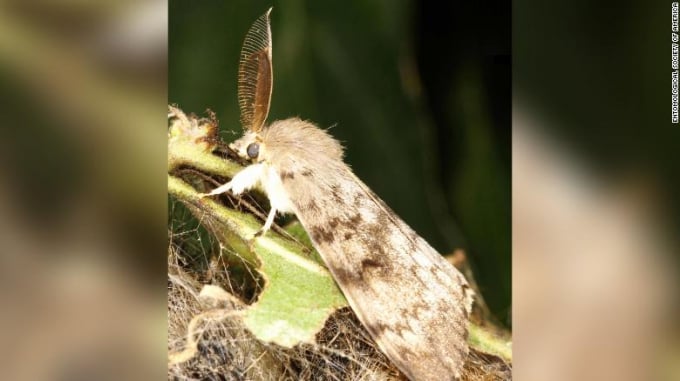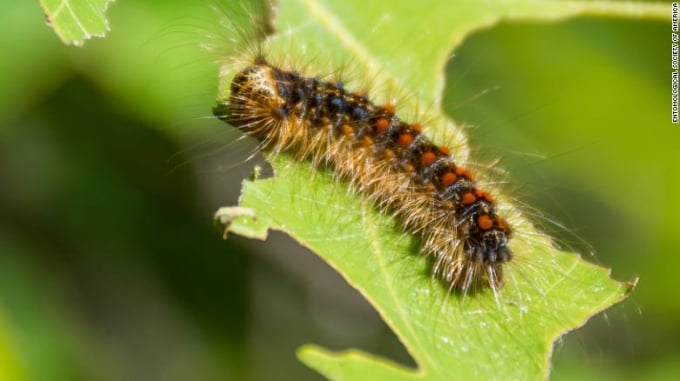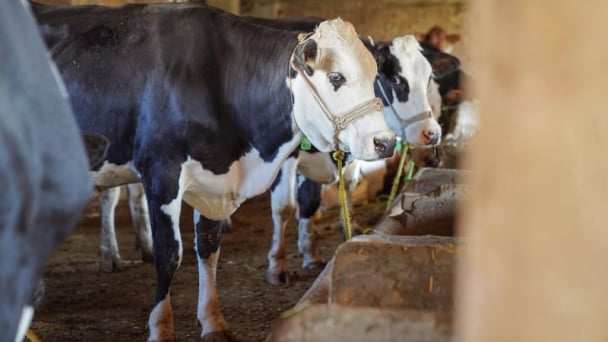May 18, 2025 | 16:45 GMT +7
May 18, 2025 | 16:45 GMT +7
Hotline: 0913.378.918
May 18, 2025 | 16:45 GMT +7
Hotline: 0913.378.918

An adult spongy moth (Lymantria disbar) sits on a leaf. Photo: CNN
Previously known as "gypsy moth," the species Lymantria dispar is now "spongy moth," according to the Entomological Society of America, which makes the Common Names of Insects and Related Organisms List, an essential database for anyone working with insects.
For the Romani people -- an ethnic group originating in northern India that was at one time misidentified as Egyptian -- the word "gypsy" has been offensive, dangerous and dehumanizing since it first appeared in the 1500s, Margareta Matache, director of the Roma Program at the FXB Center for Health and Human Rights at Harvard University, told CNN in July 2021.
Sign up for CNN's Wonder Theory science newsletter. Explore the universe with news on fascinating discoveries, scientific advancements and more.
Matache was one of several Romani scholars consulted during the name removal process.
"This process to rename the G moth can serve as a truly effective practice on how to create better common names and ensure substantive and just participation of the affected communities in the process," Matache said via email.
Native to Europe, Asia and North Africa, the spongy moth is an invasive pest in North American forests, destroying the leaves of hundreds of tree and shrub species and costing hundreds of millions of dollars in damage and management efforts annually, according to the Entomological Society of America. This moth spends most of its 10-month life in the egg stage, which is when it travels on firewood, outdoor equipment and vehicles en masse.
"Public awareness is critical in slowing its spread," said the society's president, Jessica Ware, in a news release. "'Spongy moth' gives entomologists and foresters a name for this species that reinforces an important feature of the moth's biology and moves away from the outdated term that was previously used."
"We are grateful to the diverse community of people and organizations who have been involved in this renaming process and have committed to adopting 'spongy moth' as well," Ware added.
The moth's new name was chosen from more than 200 nominations evaluated by a group of more than 50 scientists convened by the society. The group sought insight from many experts and organizations and collected more than 1,000 responses about seven finalist names. "Spongy moth" refers to its sponge-like egg masses and comes from the common name "spongieuse," used for the insect in France and French-speaking Canada, according to the news release.

Pictured is the spongy moth in larval form. Photo: CNN
In addition to the new name now being listed on the Common Names List, "spongy moth" will be used in the society's publications, presentations and social media. The society's Better Common Names Project has launched a toolkit for adopting the new name as a resource for other organizations and experts.
"'Spongy moth' is already beginning to appear in media stories and other online resources, which we're excited to see," Ware said. "But we know this name change won't happen overnight."
"In books or print products, or regulations related to L. disphar, phasing in use of the new name may take some time," she added. "ESA will continue to provide supporting resources for organizations adopting this change."
Prejudice has "produced profound harm in the lives of Romani Americans and the global Romani diaspora," Matache said in an email. "Changing the name of this insect is very relevant in rectifying the mainstream, White narratives about Romani people. I hope that the decision to give up the G-word gets to be followed by others who also need to change the names of businesses, events, websites, fashion collections, cakes, food, drinks and college parades that include the G-word."
(CNN)

(VAN) Fourth most important food crop in peril as Latin America and Caribbean suffer from slow-onset climate disaster.

(VAN) Shifting market dynamics and the noise around new legislation has propelled Trouw Nutrition’s research around early life nutrition in poultry. Today, it continues to be a key area of research.

(VAN) India is concerned about its food security and the livelihoods of its farmers if more US food imports are allowed.

(VAN) FAO's Director-General emphasises the need to work together to transform agrifood systems.

(VAN) Europe is facing its worst outbreak of foot-and-mouth since the start of the century.

(VAN) The central authorities, in early April, released a 10-year plan for rural vitalization.

(VAN) Viterra marked a significant milestone in its carbon measurement program in Argentina, called Ígaris, reaching 1 million soybean hectares measured.